Key in a search term below to search our website.
Key in a search term below to search our website.
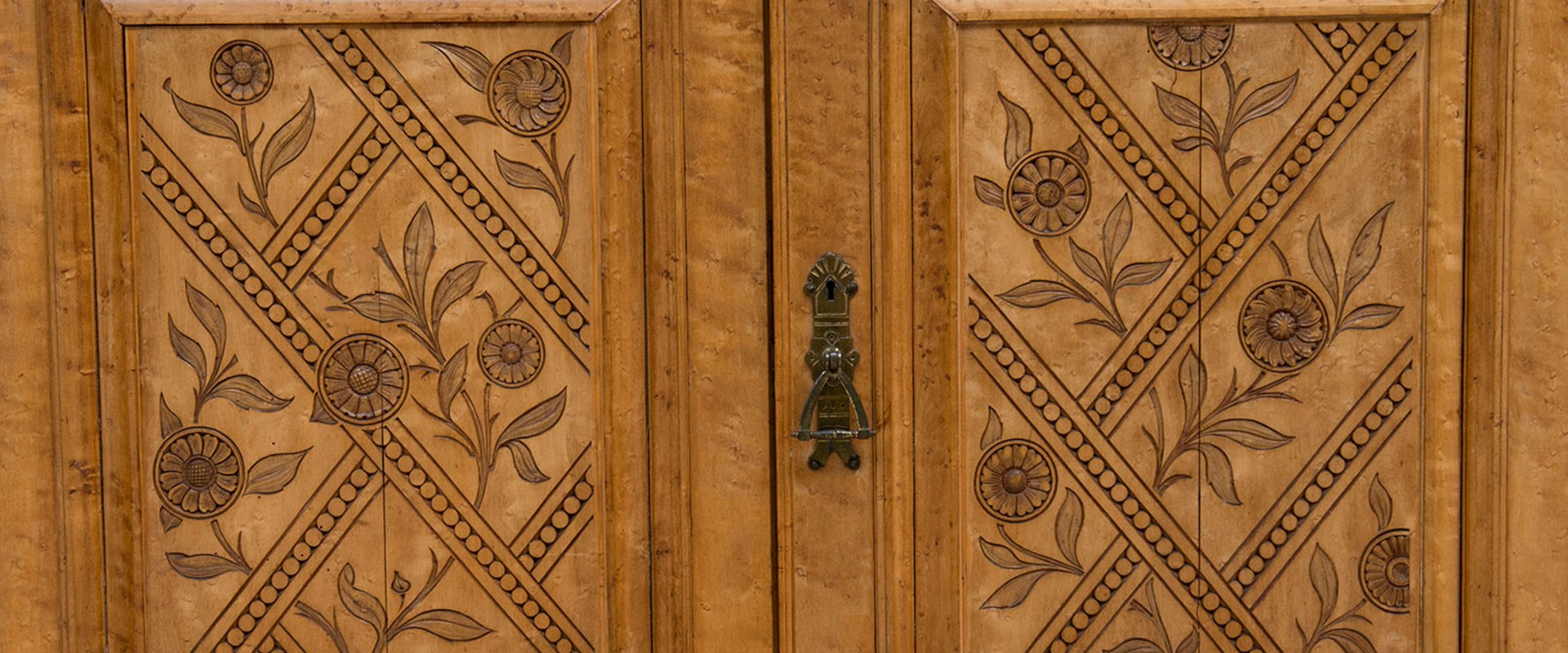
This magnificent maple cabinet was designed by Edward William Godwin and painted by the renowned artist, James Abbott McNeill Whistler.
Date
c.1877-2878
Made from
Birds eye maple, brass, painted gold
Designed by
The artist James McNeill Whistler and designer Edward William Godwin
Made by
William Watt Art Furniture
Acquired
2014, with the support of the Art Fund and National Museums Scotland Charitable Trust
Museum reference
On display
Design for Living, Level 5, National Museum of Scotland
Did you know?
The cabinet offers a wonderful example of the ways in which many Victorian artists and designers sought to remove the distinction between art and design and to treat the domestic interior as a work of art in itself.
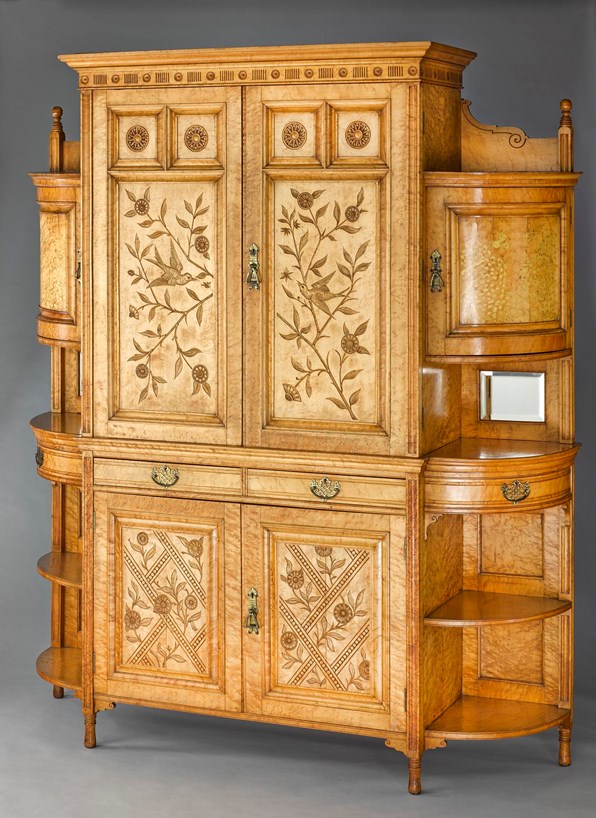
Above: The Cloud Cabinet.
The cabinet is hugely important in the history of 19th-century art and applied arts. In the style of the Anglo-Japanese aesthetic movement, the cabinet is the result of the friendship and artistic collaboration between Edward William Godwin, an influential designer of the aesthetic movement, and James Abbot McNeill Whistler, the most controversial and celebrated painter of the aesthetic movement. Designed by Godwin and painted by Whistler, the cabinet was manufactured by William Watt Art Furniture.
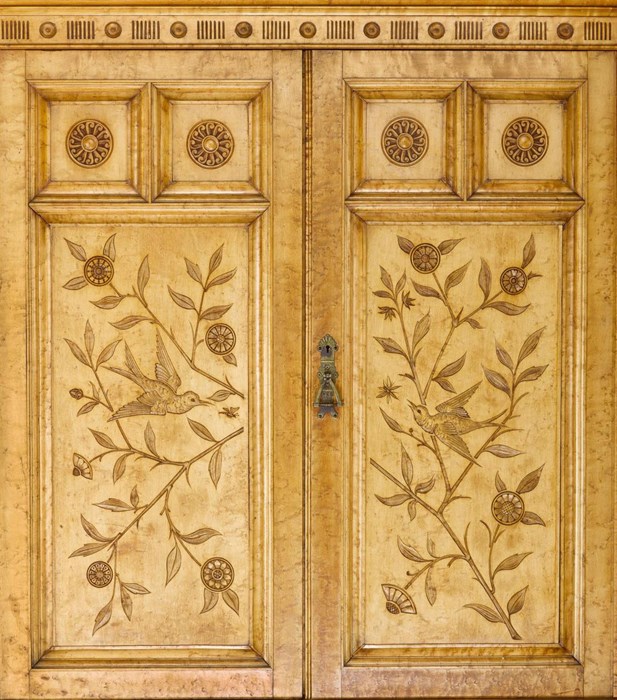
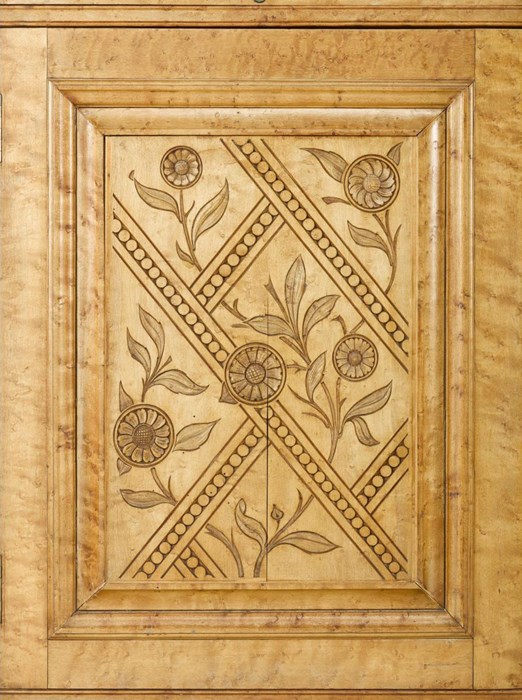
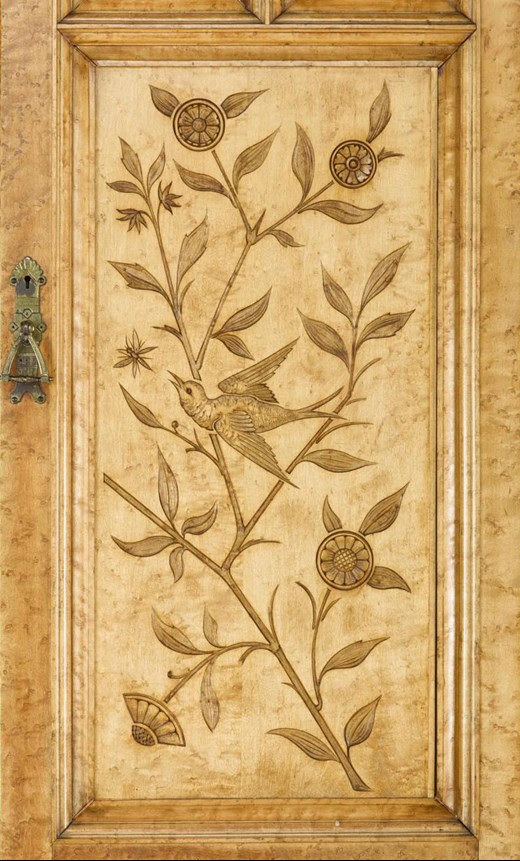
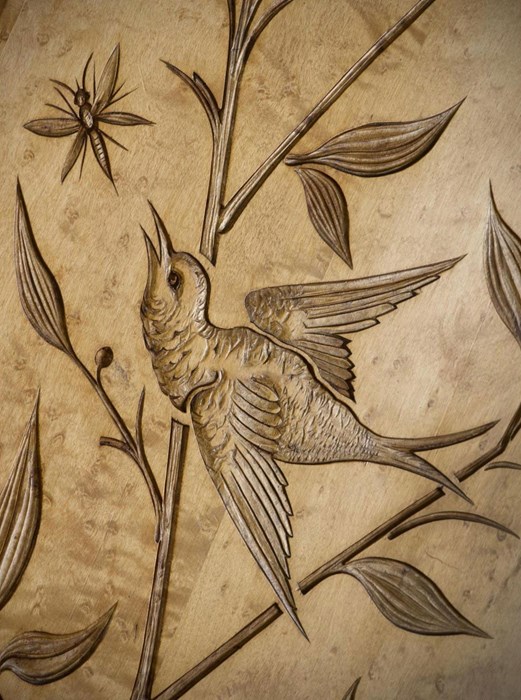
Made circa 1878 and entitled Harmony in Yellow and Gold – The Cloud Cabinet, this beautiful piece of furniture is made from birds eye maple veneer on mahogany. It is intricately carved with Japanese-style floral, bird and geometric motifs and painted with stippled clouds and butterflies in gold. The butterfly was Whistler’s signature and can be seen on almost all of his work after 1869.
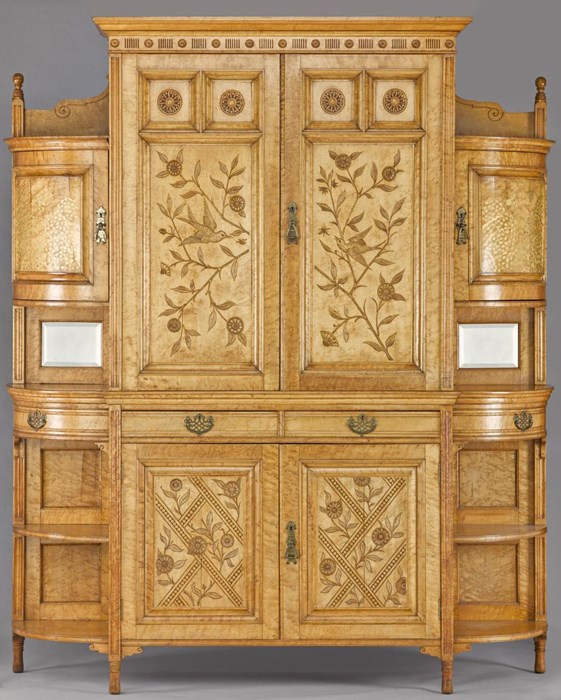
Above: The Cloud Cabinet.
The cabinet was probably intended for either Watt’s stand at the 1878 Paris Exposition Universelle or for Whistler’s Godwin-designed house The White House (1878) and still has Watt’s label on the back. Similar motifs of clouds and butterflies can be seen in Whistler’s Peacock Room, designed for the shipping tycoon Frederick Leyland and now housed in the Freer Gallery of Art in Washington, which was finished in 1877 and which is regarded by many as the most outstanding example of aesthetic movement interior decoration.
The cabinet is displayed in the Art. Design and Fashion galleries that opened in 2016, to showcase National Museums’ internationally important collections of Art and Design.
This new acquisition to our collection has been made possible by generous funding from the Art Fund and the National Museums Scotland Charitable Trust.